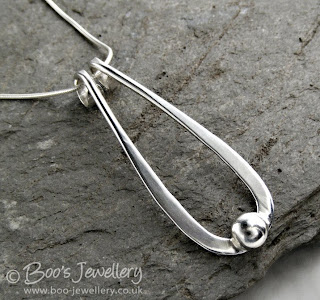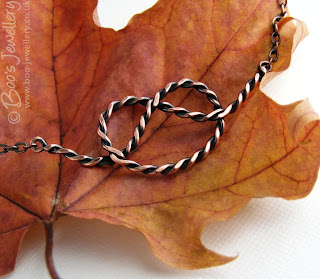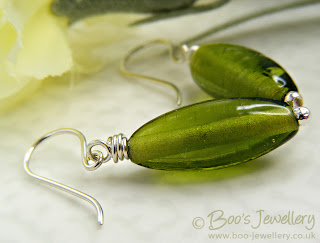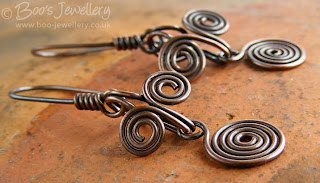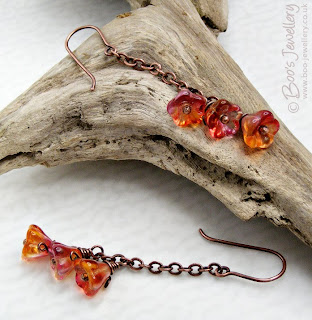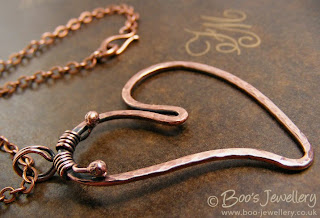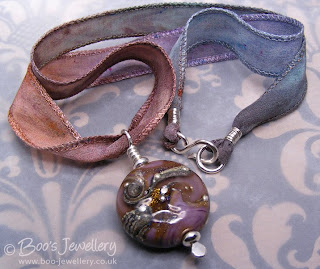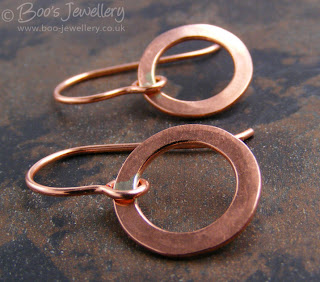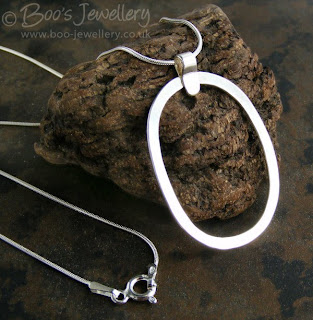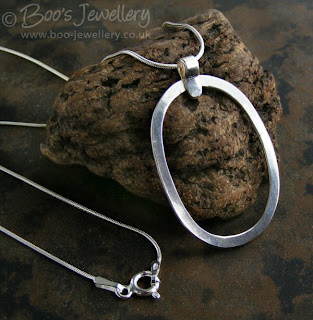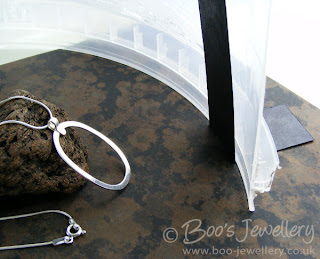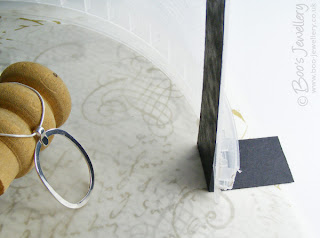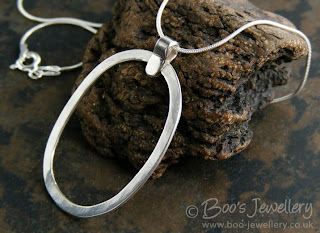I have a firm philosophy of trying to create as much of my own work as possible - by that I mean creating as many of the individual components that complete a piece as is practical. I like to make my own clasps, jump rings and pins. Some parts are easy to forge yourself, some clearly can't be replicated with ease and you need to concede defeat and just buy in the parts.

I often hang necklaces on PVC, leather, silk or cotton thong and whilst there are many commercial cord ends available, I prefer to wrap them myself where possible, which gives me the opportunity to match the rest of the piece more closely, which is particularly desirable with copper pieces - where the scant amount of copper findings commercially available rarely match the finish you've given the copper yourself.
When I first started making my own, I searched for a tutorial for wrapping the coiled spring type cord ends - figuring that there must be a technique to make it easy and reliable to replicate a uniform finish.

I never found one that suited my needs, so I grabbed my tools and wire and set about devising a reliable technique. Having settled on a method that worked well for me, I recorded the stages so that I could now make it available in a tutorial of my own.
I work directly from the end of the wire on the reel and only cut it off once I get almost done. I would estimate that the cord ends shown below use about 125mm (5") wire each - obviously this could vary enormously depending on the diameter of the cord to be covered and how many loops you choose to make your 'spring' section. The example in the photos is 0.8mm copper wire on 3mm diameter PVC.

I use a pair of stepped looping pliers (as shown in the photos) as this gives me the opportunity to create neat coils of rings consistently the same diameter, as the pliers have several sections at different widths with parallel sides. I find the plier section that closest matches the cord diameter I'm making for and if necessary, might need to trim the cord to fit inside my coil if one isn't an exact match.
Make your initial coil as long as you feel necessary to give a nice finish and give a good coverage and grip of the cord end (I usually do about 8 full loops) and cut off the wire with a good inch or so remaining - enough to make two full turns of the wire - maybe measure this with a scrap for your diameter of coils, before cutting the final wire. Start coiling it back towards the main coil - keeping the coils the same side of the wire as the original coil - that's the bit I always struggle to remember and when you do it the wrong way, it simply doesn't sit as well. This is perhaps the single most important part to get right.


When you have your 2 full turns you should be back against the original coil. Start twisting it round - rotating it in the same direction as you did the turns in the wire, but now bringing those two loops on top of the original coil by twisting the two coils in opposite directions.

Carry on rotating and twisting the most recently made two loop coil on your pliers, so that it tightens up and sits perpendicular to the original coil - sitting nicely on top of it in the centre:

Give it a little final twist to tighten all the gaps - you can see a little daylight under the pliers above where there's still some slack, another part turn will close that up tight.
If the length of your wire was right when you cut it, the cut end should just nestle in the hollow top of the original coil, out of the way - this one is a few mm short ideally. I'd normally trim it flush at both ends to finish with a nice curved end, I hate to see that last little straight section where the wire was held in your pliers as you work, so always cut that last little straight section off.

This is why you need to coil it the right side of the wire, to get a nice neat twist like this, done the other way, doesn't sit neatly:

To attach the cord ends, I slip them over the end of the cord - which in the case of loosely woven silks and rattail etc., I tend to prepare by compressing the ends of the ribbon (folding over if necessary) and securing the threads with a little dab of PVA glue and let it dry before adding the ends. If solid cords like leather and PVC are a tight fit, shaving a tiny sliver off with a sharp knife or scalpel may make fitting them easier.
Once satisfied with a good secure and snug fit, I squeeze it into place by first contracting the last full loop slightly, so that it tightens around the cord gradually - by squeezing the coil of metal very gently to tighten, then releasing and moving along a little. When the cord end is secure with that one last tightened loop, I finish by squeezing the very end of the wire into the cord itself. It should dig in and make the cord end totally secure on the cord. You can now attach your choice of matching clasp components. My own preference tends to be a large ring and hand crafted hook.
To glue or not to glue?Some people choose the additional security of gluing the cord end on before tightening the last loop onto the cord, but I personally have never done this - purely because this makes it more difficult to alter the length of the necklace once finished. As I sell at craft fairs too, if the customer wants the necklace shorter, I can cut the last loop of the cord end off the coil, loosening it off the cord, trim the cord to the required new length and re-work the cord end into place. It will be one loop shorter, but otherwise look the same with minimal wastage of materials. For necklaces featuring these fastenings that I put for sale on-line, I tend to only fix one cord end initially and finish the second once the customer lets me know their preferred finished necklace length.
 Of the two bracelets made in copper, this was the heavier one.
Of the two bracelets made in copper, this was the heavier one.








































